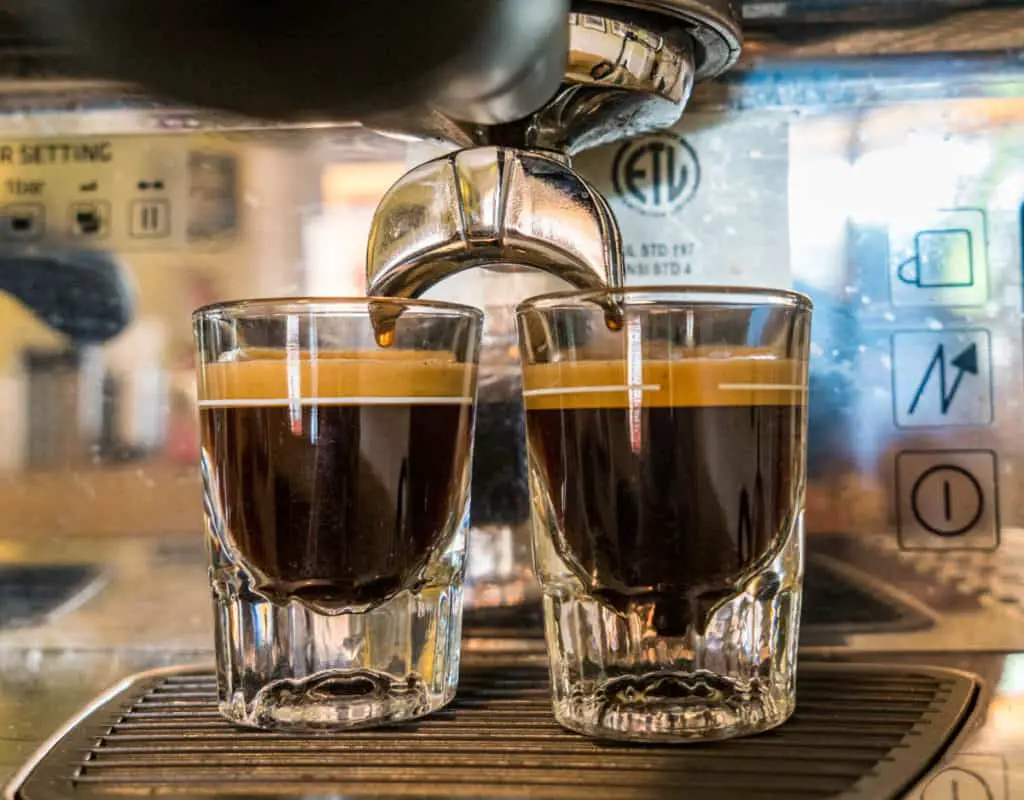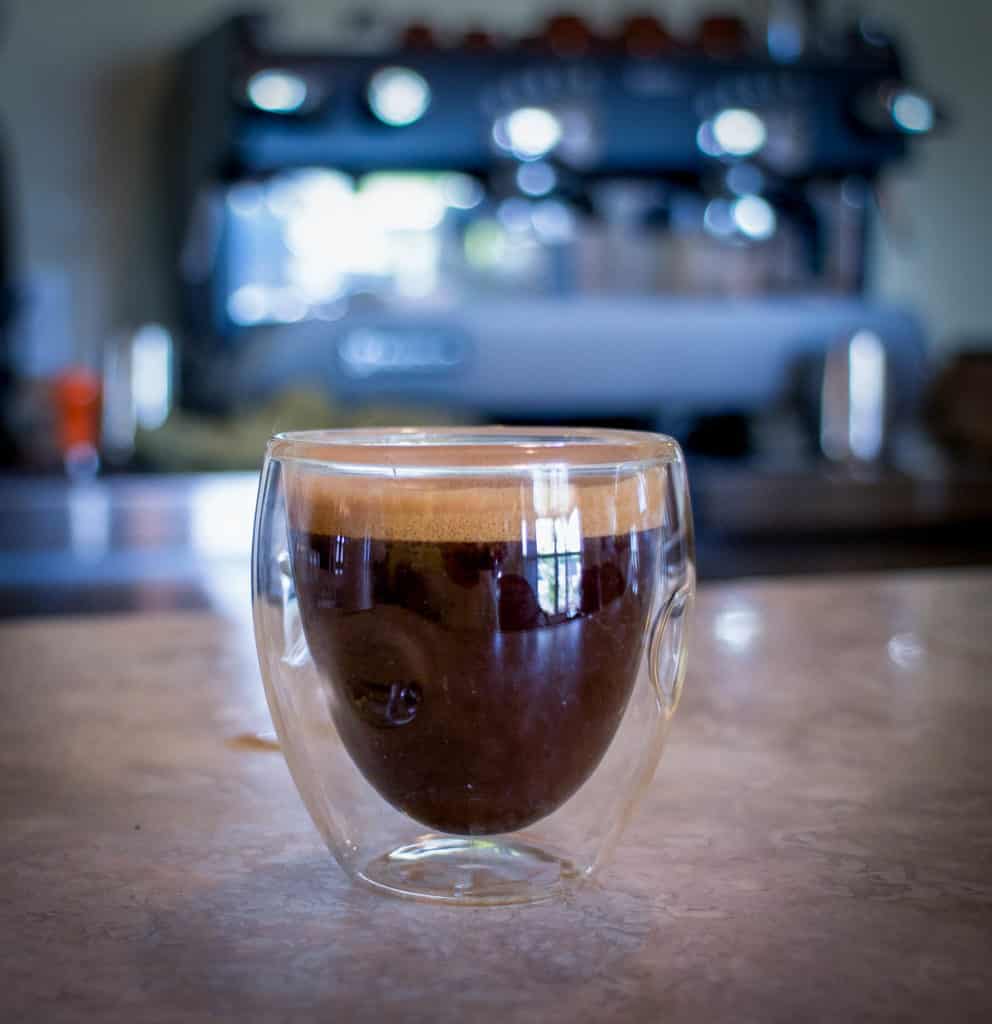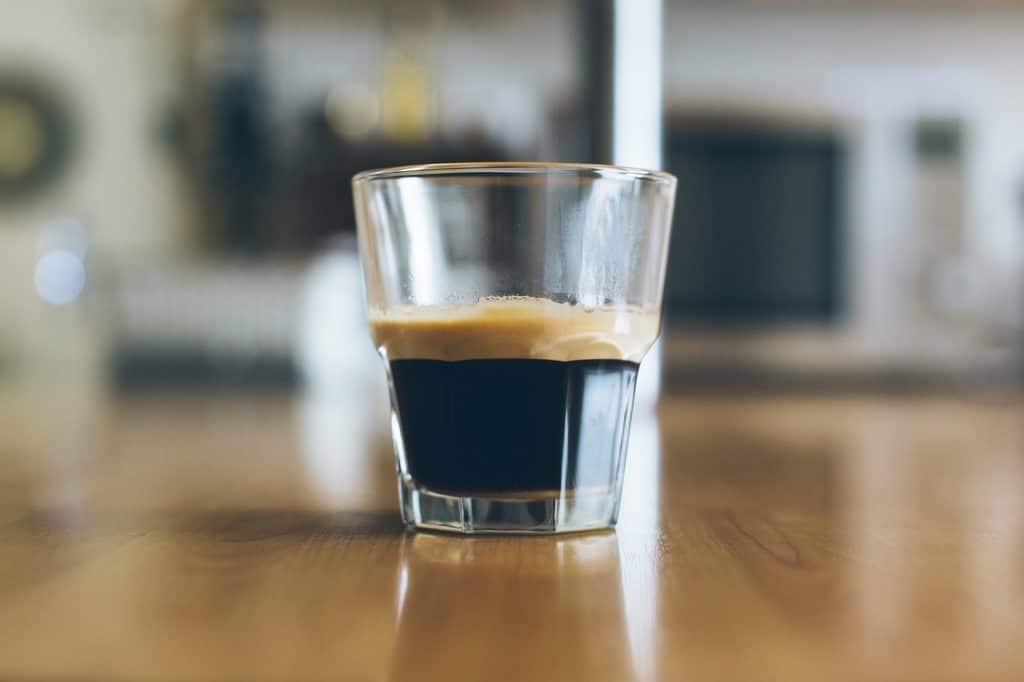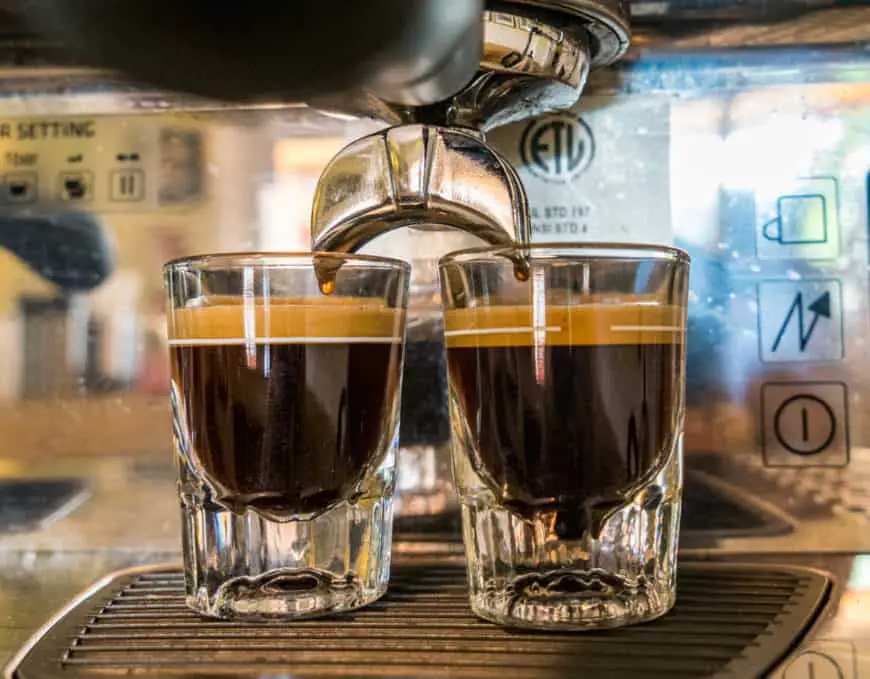
Coffee crema is a thick, creamy layer that forms on top of a freshly brewed espresso shot. It is composed of a mixture of coffee oils, proteins, and carbon dioxide and is considered a hallmark of high-quality espresso.
Crema is a sign of a well-extracted shot, as it indicates that the espresso has been brewed with the right pressure, temperature, and grind size. The crema acts as a natural sweetener and enhances the flavor of the espresso. It also provides a smooth and velvety texture, making the espresso more enjoyable to drink. Overall, coffee crema is an important aspect of espresso brewing and contributes to the overall quality and taste of the final product.
Crema and Espresso
Whenever you hear about espresso, the term “crema” is usually not far behind. In fact, when you actually start drinking espresso, crema is the first thing you make contact with, both visually and with your lips.
For the regular drinker, crema is a nice, frothy treat, but for enthusiasts and experts, it’s a way to gauge a person’s coffee making techniques. But what is crema? What makes it so intrinsic to coffee and espresso making? Today, we’re going to find out.
The word crema basically means cream in Italian, but it’s not the same as the cream we think of. In the context of coffee, espresso in particular, it describes the light layer of foam on the surface of a cup of espresso.
It is sometimes referred to as the Guinness Effect, referencing the famous dark beer from Ireland that produces its own unique foam when it is poured into a glass. The foam itself is generally tasteless.
Crema foam is formed during the extraction process of espresso, when the water and the oils from the coffee beans are blended together in high heat. As we know from chemistry class, oil is less dense than water, so the two would not actually mix. Instead, the oils from the beans gets suspended within microbubbles of air that form the top layer of foam.
On top of that, when coffee beans are roasted, they produce carbon dioxide gas for a couple of days after it’s been roasted. During the extraction process, if you’re using freshly roasted coffee beans, this carbon dioxide gas is also released, adding to the volume of the foam.
For many coffee enthusiasts, the creation of crema on espresso is a good indicator of not only the skill of the barista that made it, but also the overall quality of the beans that were used. There are two major reasons why this mindset is so prevalent.
Firstly, many enthusiasts believe that the coffee bean’s natural oils, and therefore its overall flavor profile, varies greatly depending on how well it was cultivated.
Another factor that has given rise to this mindset is the freshness of the beans themselves. As we’ve mentioned before, the more freshly-roasted the beans are, the more carbon dioxide it produces during the extraction process.
Of course, a pretty cup doesn’t always mean it’s delicious. How good a cup of espresso ultimately is depends on each individual’s preferences. Don’t let the lack of crema or the abundance of it hinder your ability to enjoy your favorite cup of coffee as you like it.
What Does Good Crema in Espresso Look Like?

As we’ve mentioned before, crema can be a good indicator of a lot of factors in espresso. This includes how fresh the coffee beans are and how well they’ve been cultivated before being roasted. This also means that there is such a thing as bad crema, and of course, bad espresso. But what does good crema look like?
The first thing you’ll need to look at is the color. Crema generally has a light reddish gold color. Having it a bit dark is forgivable, but the problem mostly lies when it’s too light in color. Lighter crema more or less means the coffee used has less oil. Another thing you’ll need to look at is the texture.
The crema should be smooth and velvety in texture. The foam itself should be uniform; you can’t have large bubbles forming on it, as that gives crema a somewhat gritty texture.
Crema should also have the ability to stay on your espresso for a good two minutes before being reabsorbed into the rest of your coffee. If your crema can’t even last at least a minute, then there’s a problem with it, mostly involving the amount of oil in the beans being used.
Of course, the layer of crema shouldn’t be too thick or too thin, either. A good rule to follow is that the crema should only occupy 10% of the overall cup itself.
What Factors Affect Crema?

If you’ve tried your hand at making a cup of espresso but aren’t too happy with the crema you’ve produced, then it might not necessarily be your fault. The quality of crema can be affected by a lot of factors, including the production process and roasting process of the coffee beans themselves. Here are some factors that you should keep in mind when trying to create crema.
Coffee Bean Processing
As we’ve mentioned before, the beans themselves are a huge factor in the quality of your crema, and not with just how your coffee will taste.
Naturally, beans that have been cultivated or processed in a certain area will have fat and sugar content that are totally different from beans produced in others. For good quality crema, you’d want beans that have been cultivated in dryer, less humid climates, like in Africa or Central America.
Naturally dry beans, or beans that have been honey processed, pulped natural or semi-washed are able to maintain a higher oil content than beans that have been grown in more humid climates.
Coffee Bean Roasting Date
For good crema, you’d want to maximize the amount of carbon dioxide without sacrificing the actual coffee solids you can extract while making espresso. You’d want to use coffee that has been roasted no more than 72 hours before. This would allow any excess carbon dioxide to dissipate but would still have enough left over for the oils in your coffee beans to emulsify well for a smoother crema texture.
Coffee Roast Color
As we’ve mentioned many times before, the oil content in your coffee beans are a big factor in the quality of your crema. Generally, the more oil there is, the more persistent and smoother your crema is. That said, a good indicator for the oil content in coffee beans is the roast color. Darker roasts tend to bring most of its oil content to the surface.
This means that as the darker roast beans are being transported and processed, much of this natural oil will have dissipated by the time it gets to you. Darker roasts, therefore, will have less oil to emulsify during extraction, and will produce less crema. So, if you want better crema, choose lighter roasts.
Final Thoughts
Crema with espresso is not a complete indication of how a coffee will taste. Its just a part of the total that combined with many other factors that can tell you how good an espresso will taste. The best and funniest way to see how crema affects your opinion of a coffee is just to try different types of espresso from different places and see for yourself!

